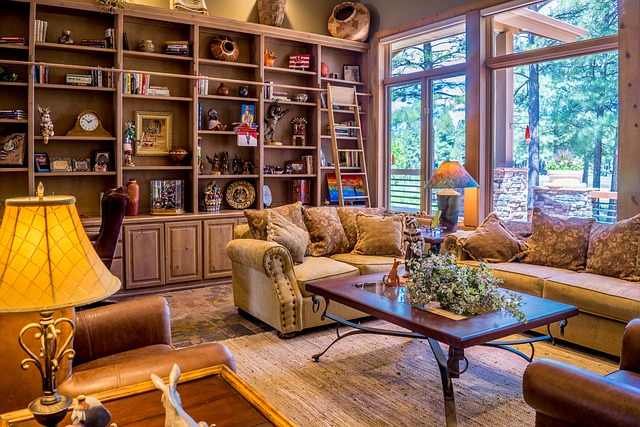The Importance of Thoughtful Material Choices in Creating Stunning Interior Designs
Choosing the right materials is key in interior design, affecting how our spaces look, feel, and impact the environment. The materials we select can greatly enhance the visual appeal and comfort of a space, as well as its sustainability. As designers work to create beautiful and functional environments, it’s important to understand what goes into making effective material choices, especially as more consumers seek sustainable and innovative options.
For an interior designer in Los Angeles, selecting materials is a complex process. It requires balancing various factors such as aesthetics, functionality, environmental impact, and budget. The following text will cover these aspects in detail, providing insights into how thoughtful material selection can transform spaces. We will discuss the significance of visual elements like color and texture, the practical requirements of different rooms, sustainability, and cost considerations, and highlight innovative materials.
Aesthetic Considerations
The visual appeal of materials plays a vital role in shaping the overall feel of an interior space. A thoughtfully selected color palette can create various moods, ranging from calm and peaceful to lively and energetic. For instance, cool blues and greens can evoke a sense of tranquility, while bright yellows and oranges can energize a room. Textures introduce depth and tactile interest, making a space feel either softer and more inviting or vibrant and stimulating.
Incorporating different materials, like plush fabrics or sleek metals, can enhance this effect. Patterns, whether subtle or bold, influence how a space is perceived, altering emotions and the flow of movement within the room. Together, these elements—color, texture, and pattern—are powerful tools for designers. They enable the transformation of a room’s atmosphere to align with a specific aesthetic vision while also resonating with the personal styles and lifestyles of its inhabitants, creating a space that truly feels like home.
Functional Requirements
When choosing materials for different spaces, it’s important to think about their specific needs. Kitchens, bathrooms, and living areas all have different requirements. For kitchens, you need materials that can handle high heat and moisture while being easy to clean; durability and hygiene are essential.
Bathrooms also need water-resistant materials that are easy to maintain to deal with humidity and frequent use. Living areas should focus on comfort and looks, using materials that feel good and look appealing. Overlooking these needs can lead to problems and higher costs later on due to repairs or replacements. Choosing the right materials for each space improves usability and helps create a lasting, comfortable home.
Sustainability and Environmental Impact
As awareness of environmental issues grows, choosing sustainable materials in interior design is becoming increasingly important. The materials selected influence how a space looks and functions and its impact on the environment. Using materials that are recyclable and have a positive lifecycle can reduce waste. Additionally, it’s essential to consider how these materials affect indoor air quality, as some can release harmful chemicals that impact residents’ health.
The industry is shifting towards greener options, such as bamboo, reclaimed wood, and innovative recycled materials. These eco-friendly choices support sustainability and meet the rising demand for healthy living spaces. By focusing on sustainability in material selection, designers can create environments that benefit both the planet and the people living in them.
Budget and Cost Considerations
Understanding how material choices affect the overall budget of an interior project is essential for balancing cost and quality. Effective budgeting helps achieve design goals without making unnecessary compromises. High-end materials like natural stone or premium wood can enhance a space but usually come with higher prices.
On the other hand, more affordable options like engineered wood or laminate can imitate these premium materials while keeping costs low. To find a good balance, consider mixing both expensive and budget-friendly materials to maintain a cohesive and attractive design. Also, careful project planning and setting aside extra funds can help avoid unexpected expenses that could disrupt the project.
Technological Innovations
Recent advances in material science are transforming the interior design industry. New materials and technologies are changing how we design spaces, enhancing creativity and functionality. For example, smart materials can adapt to environmental changes, improving energy efficiency and comfort. Innovations like 3D printing enable customized designs that were once impossible.
Sustainable options, such as biodegradable materials and reclaimed wood, not only look great but also promote environmental responsibility. This blend of technology and material science gives interior designers a wide range of tools to create functional, stylish, and sustainable spaces.
Thoughtful material selection is essential for effective interior design, influencing aesthetics, functionality, and sustainability. By considering elements like color, texture, and pattern, designers can create environments that resonate with personal styles and enhance the overall experience. Addressing the specific requirements of different spaces ensures usability and longevity, while prioritizing sustainable materials reflects a commitment to environmental responsibility. Balancing budgetary constraints with quality allows for innovative designs without compromise. As technology continues to progress, the integration of advanced materials and techniques offers exciting possibilities, empowering designers to craft beautiful and functional spaces that meet modern needs and values.

